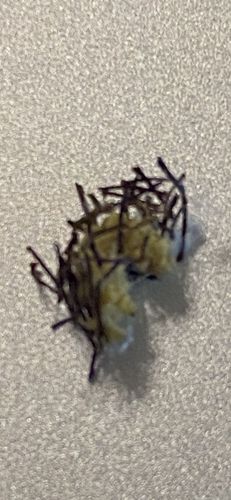Household Casebearer Moth Larva
Scientific Name: Phereoeca uterella (or similar species within Tineidae)
Order & Family: Lepidoptera, Tineidae
Size: Larval case: 10-15 mm (0.4-0.6 inches) in length. Adult moth: wingspan of 10-14 mm (0.4-0.55 inches).

Natural Habitat
Commonly found indoors in undisturbed areas such as closets, attics, under furniture, in cracks and crevices, and in museum collections. They prefer dark, damp environments. Outdoors, they can be found in sheltered areas such as under eaves or in bird nests.
Diet & Feeding
The larvae are scavengers, feeding on a variety of household materials containing animal fibers, such as wool, silk, hair, felt, and sometimes synthetic fibers if mixed with natural ones. They also feed on spiderwebs, old insect specimens, and various dried organic matter. The adults do not feed.
Behavior Patterns
Case-bearing insects live inside the protective case built from silk and environmental debris, which they carry with them as they move. They primarily move to find food or new locations for pupation. Adult moths are typically nocturnal and short-lived, focusing on reproduction.
Risks & Benefits
Potential Risks: Primarily a pest of stored products and fabrics. They can cause damage to clothing, carpets, upholstery, and natural history specimens made of animal fibers. They are not known to bite or transmit diseases to humans. Potential Benefits: In their natural outdoor habitat, they contribute to the decomposition of organic matter.
Identified on: 8/18/2025